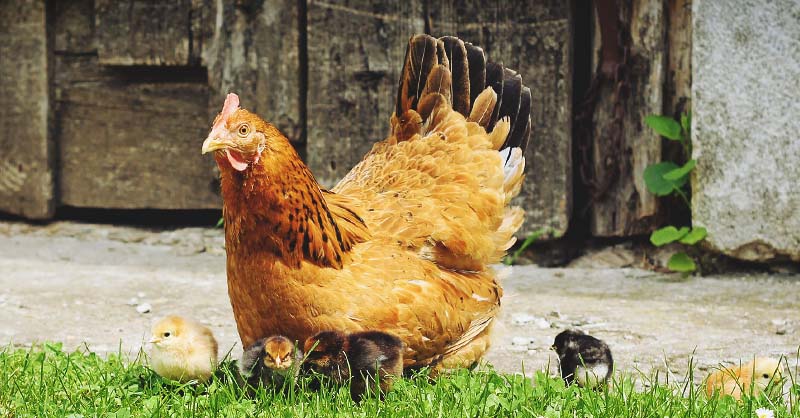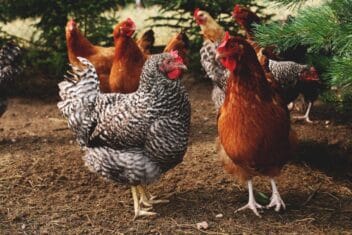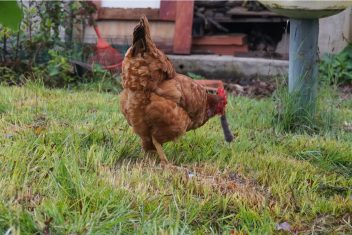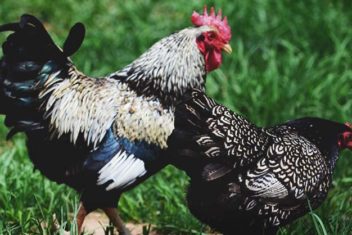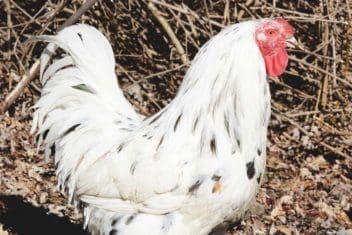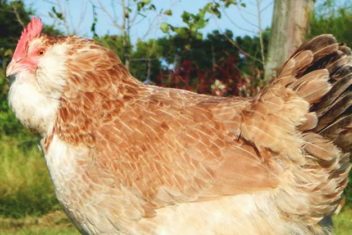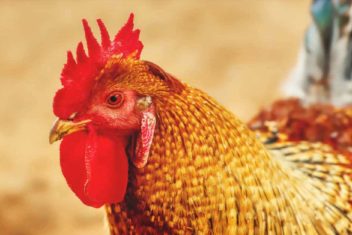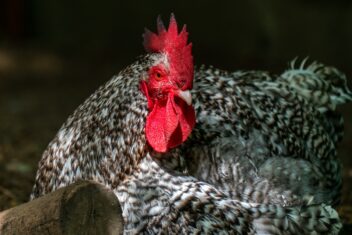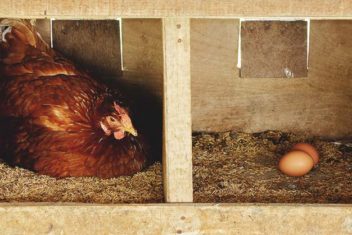Broody hens can be viewed as a burden or the greatest asset to your chicken flock, depending on your outlook and goals. A broody hen is a chicken that wants to sit and hatch a clutch of eggs. If you have no plans to grow your flock of chickens, broody hens mean a reduction of eggs available for you, not to mention an unhappy hen. On the other hand, homesteaders who want to raise a self-sufficient flock of chickens should rejoice when they see a hen sitting on her eggs.
My first experience with broody hens was nothing short of inspiring. I dislike raising chicks from the store. I don’t like playing the role of a mother hen. It’s frustrating to have chicks indoors, having to check their temperature constantly, and the like. For me, raising chicks isn’t a task I enjoy, so when I discovered my broody hen named Anna sitting on a clutch of eggs, I rejoiced.
She produced a few chicks for us, including one rooster that my kids named Peanut. I had to do nothing with those chicks but watch the hen do her thing.
On the other hand, if your broody hen is sitting on a clutch of eggs that haven’t been fertilized and you want her to return to laying, you’re going to have to address the problem.
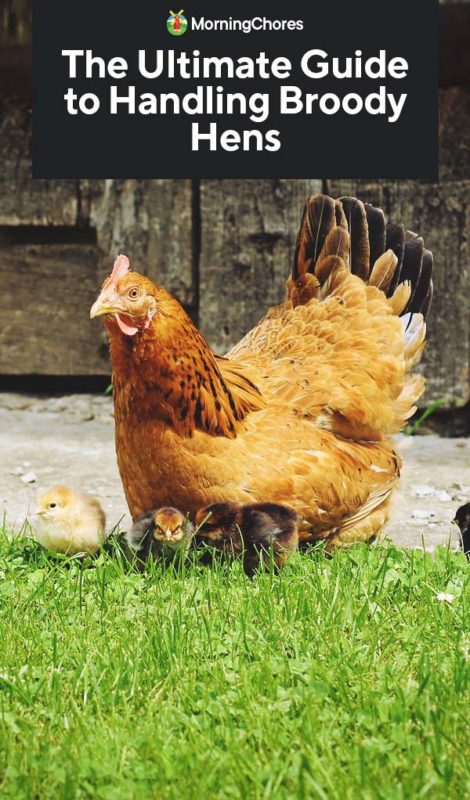
What Does It Mean When a Hen is Broody?
Going broody is the termed use when a hen decides she wants to hatch some eggs, which means she will sit on those eggs for an extended time. Her body temperature increases, and she consumes less food and water than usual. It’s a natural phase for many hens, and it doesn’t indicate that anything is wrong with your chicken. It’s only a problem if you don’t want her to work on hatching eggs.
What Causes Broodiness?
Broodiness is caused by a variety of factors, such as your hen getting older and maturing. Most broodiness is a combination of hormones and sunlight. As spring and summer approaches, the length of the days get longer, and that increase in sunlight encourages a hen’s body to release prolactin, a hormone created from the pituitary gland of the hen.
Together, sunlight and prolactin encourage a hen to become broody. As a result, she wants to sit on her most recently laid eggs – fertilized or not.
What are the Signs of Broodiness?
Is your hen acting weird? How can you tell if she is broody? Here are some signs to watch for.
- Reluctance to remove herself from the eggs in the nest
- Sitting in the nest even if there are no eggs
- Pecking your hand when you look for eggs underneath her
- Missing chest and belly feathers
- Pale combs and wattles
- Only leaves the nest once or twice a day, quickly hurrying back.
- Unusually large and smelly poops
- Flattens out in the nest, covering a larger area than usual
- Consumes little food and water
- Clucking to the eggs
The Broodiest Breeds
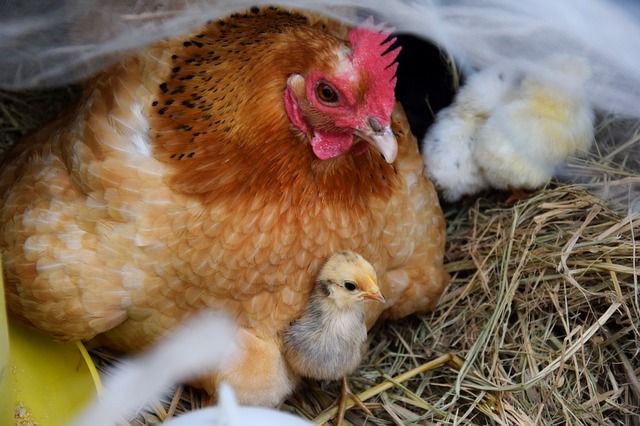
Any breed can go broody, but some breeds are more notorious for broodiness. If you want to have broody hens to keep a constant flock available for your family, pick a few breeds that are known for their broodiness. Most good broody breeds hatch about anything and are great mothers to their chicks.
If you want your hens to keep laying eggs and not focus on hatching, then stay away from the broodier breeds.
The most broody breeds are:
How to Take Care of Broody Hens
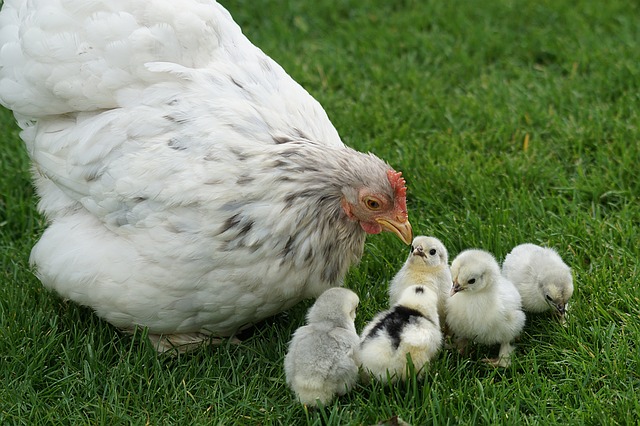
If you want to let Mother Nature take over and have your broody hen hatch a clutch of eggs, the process is simple. That doesn’t mean you don’t need to know how to take care of a broody hen since there are a few steps you should follow.
Hens can hatch any eggs – chicken, duck, turkey, guinea, and goose eggs. Make sure she doesn’t have too many, though. She needs to be able to turn all of the eggs over, and her body needs to be able to cover them. Smaller hens can cover around 7-10 eggs, but larger breeds handle 15-20 chicken eggs just fine.
1. Pick a Safe Spot
Chances are your broody hen is like mine and picked the favorite nesting box to sit. I didn’t realize I had a broody hen until I opened our coop and found a line of hens waiting for their favorite nesting box like they were at a grocery store waiting to check out. You probably have several boxes available, but there always seems to be a favorite.
Some owners let their hens brood in her box, but you can pick to move her to a safe spot if you desire. Each option has pros and cons.
Be sure to make the nesting box as comfortable as possible for the hen that will be sitting there tirelessly for the next three weeks. Adequate nesting material is important to make sure that the eggs remain well cushioned to avoid breakage.
You can also add herbs to help ward off parasites, calm your hen, and provide a little treat. Lavender, mint, rosemary, and thyme are all easily found herbs that your hen can greatly benefit from.
Moving Your Hen to Her Own Nest
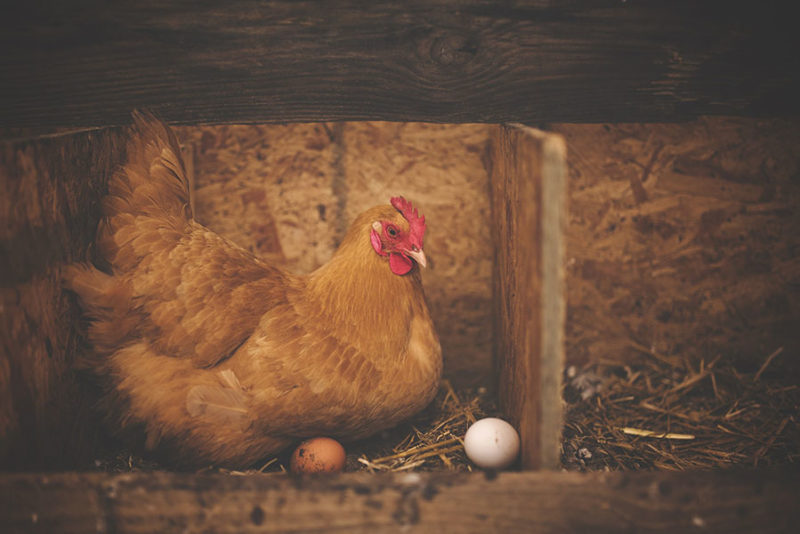
The positives of moving your hen include the fact that it allows her to rest away from the other hens. It’s also easier to track her eggs, and other hens can’t get into her nest.
The cons are that you must provide her food and water. She also might refuse to sit in the new area, or she might break out of her broodiness.
Leaving Your Hen In the Nest
Leaving your hen in place is less stressful than moving. It also lets her interact with the flock, and you don’t need to provide separate food and water.
On the downside, other hens might add more eggs under her, which causes issues with sporadic hatching. Other chickens could break her eggs if you leave her in the nest. She also might stop other chickens from laying eggs.
How to Move a Broody Hen
If you decide to move your hen to a new spot, make sure you prepare her nest before moving her. It’s best to put a new clutch of eggs under her as well, so the area is completely ready.
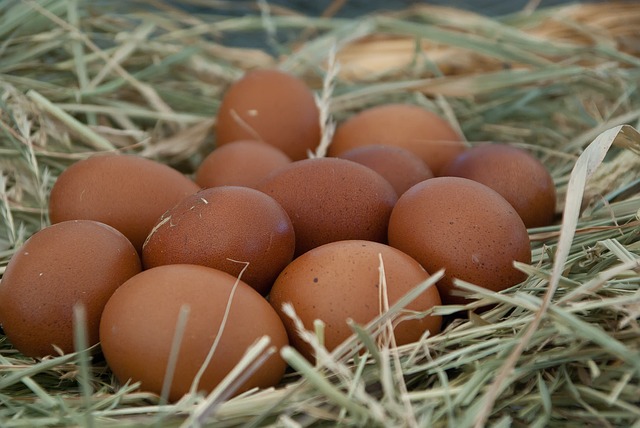
When you remove her from the nest, she might try to peck and bite you. Hold her with her wings against her body so that she can’t flap. Put her in her new area, near her eggs but not on them. She might accept the new nest, or she might refuse to sit.
If you decide to let her sit in the nesting box, make sure it’s large enough for her clutch of eggs. She needs to be able to get up, move around, and move her eggs. The nesting box should be at least one-foot square. Place her food and water in front of the nesting box.
2. Mark the Eggs
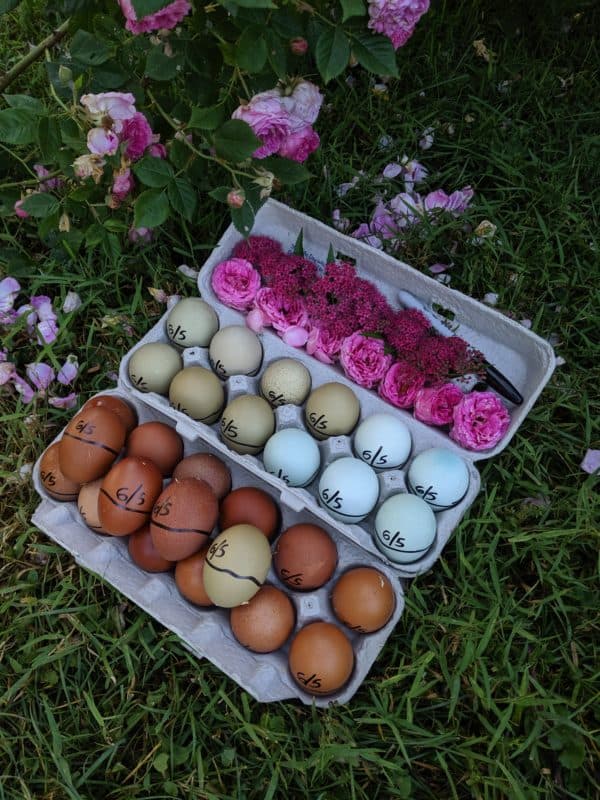
One tip I find helpful is to mark the eggs using a marker or pen with the date you set them under her. Eggs take 21 days to hatch, give or take, and it’s easy to lose track of the days. This is also a good idea if you are leaving her in the coop because you’ll know if she inherits any additional eggs.
A broody hen won’t get very far in her journey if she doesn’t have fertile eggs to set on. If you have one actively breeding rooster for every 8-12 hens in your flock, you should have fertile eggs from your own hens. For those that don’t have their own fertile eggs, you may be able to find a local farmer with their own “barnyard mix” or purebred hatching eggs.
A third option for finding fertile hatching eggs is on the internet. You can find breeders all over your country with hatching eggs for sale. Due to the fact that hatching eggs purchased online are generally expensive and especially fragile from transit, make sure you’re putting them under a very trustworthy and gentle hen.
A first-time mother might not be the one to put a dozen $50 eggs under.
The question arises often “What happens when I put eggs of a different species under my broody hen?”. This largely depends on the temperament of your mother hen. Sometimes a hen can mother a brood of ducklings quite well, albeit slightly perplexed by their affinity for water.
Other times a hen will lose her mind at the web-footed fuzzies hatching under her and will injure them in her confusion. When mixing different birds, just keep a close eye on the interaction to make sure nothing goes amiss.
3. Hen Commitment
Just because a hen goes broody does not mean she’s going to follow through the whole incubation period.
It’s a good idea to let your broody sit on fake eggs for three-five days to test her commitment before giving her real eggs. Other times, a hen will give up on day 15 and leave you with viable eggs that will die without an incubator to finish out the development.
First-time mothers can be especially unpredictable with their nests. After a hen has successfully raised a few clutches, you can generally trust her to stick with her eggs.
4. Self-Care for Broody Mother Hen
Setting hens are excellent at neglecting their own health when nurturing their growing embryos. It’s necessary to take good care of your hen because they can literally starve themselves to death on the nest.
Make sure your hen is always getting off the nest once or twice a day. If she isn’t, remove her to encourage her to get some food, water, and maybe a quick dust bath.
It’s also totally acceptable to spoil your hen a little extra while she’s tirelessly sitting on those eggs of hers. Mealworms, plain oatmeal, watermelon, and pumpkin are all yummy treats that your hen would certainly enjoy during her long days on the nest.
Broody hens are especially susceptible to mites and lice when they are sitting on the nest. Make sure to check your hen and treat her immediately if you discover these pesky parasites. An infested hen will pass parasites to her newly hatched chicks, which could kill them in their vulnerable state.
5. Candling Eggs
When chicken keepers are incubating their own eggs, egg candling is a common practice to look inside the egg to check development. It’s up to you if you want to candle your hen’s eggs or not, candling is not a required step and can sometimes annoy a mother hen more than it’s worth.
I often carry a flashlight out to the coop after dark and check eggs so I can throw out any eggs that definitely don’t have any development by day 10.
Even if you don’t candle your eggs, make sure to periodically smell the nest to check for any foul odors that indicate a rotten egg. Rotten eggs can explode and ruin an entire clutch of eggs, so it’s important to remove them before they cause damage.
Hatch Day!
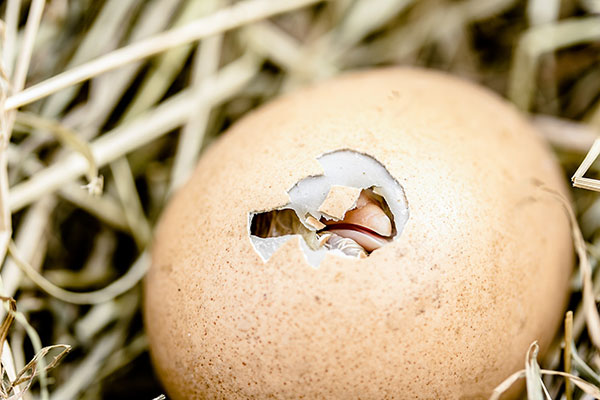
Hatch day can be both exciting and nerve-wracking for you and your mother hen. Luckily, she’s usually a bit calmer than you might be. As the time approaches, your hen will spend less and less time off the nest. Don’t worry if the mother hen doesn’t leave the nest for 24 hours. She might start to cluck to her eggs too. Around day 21, little peeps might be audible.
It’s important to give the whole brood their space even though all you want to do is peek under every 10 minutes. It takes two to four days for all of the eggs in a clutch to hatch, and chicks stay under mama for one or two days.
Chicks absorb the yolk into their bodies right before they hatch, so they have food reserves to last until they venture off the nest with their mama.
After four days, remove any eggs that have yet to hatch. These eggs aren’t viable.
After the Hatch
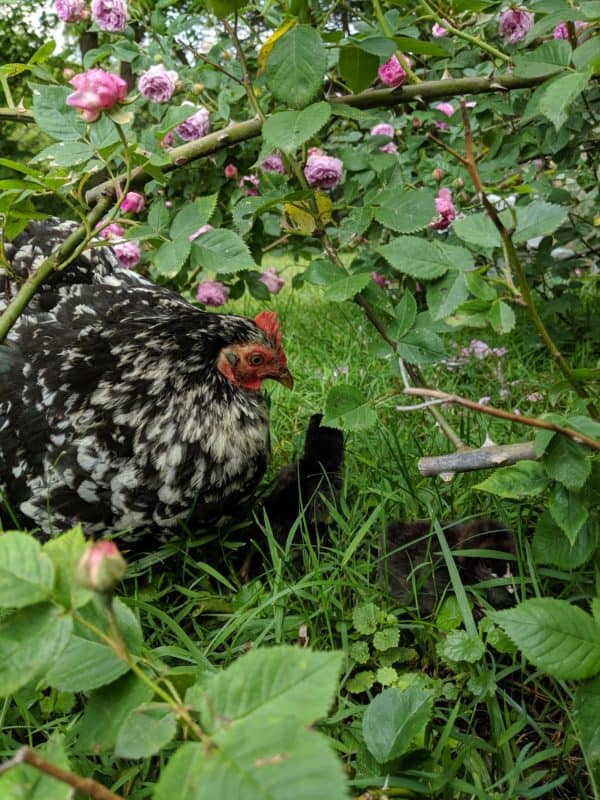
Once her eggs hatch, it’s essential to keep the chicks separate from the flock. The best thing is to keep them in a pen inside of the run where the other chickens can see them, but where they’re safe from the elements and other chickens.
You’ll want to monitor the new mother and her chicks closely, but unless there is apparent turmoil, you shouldn’t need to intervene. Mother hens can save a lot of time on your part by doing everything for their new babies from keeping them warm to teaching them to eat, drink, and forage for bugs.
Provide chick food for them to eat. Don’t worry about giving your momma layer food until she needs to start laying again. For right now, she is busy teaching her chicks how to live, so she isn’t focused on laying eggs yet.
Just provide the proper tools, and your hen will do all the work for you!
1. Murderous Mothers
Especially when dealing with a first-time mother, you will want to be alert to make sure your hen takes well to the chicks popping up under her. Sometimes first-time mothers follow the instinct to sit on eggs but don’t respond well to the results of the eggs she’s incubated.
Occasionally, new mamas will peck their fresh chicks, sometimes to death. Just keep an eye on your hen for the first 24 hours to make sure she takes to motherhood well.
2. The Nursery
The first thing mother hens need to ensure safety for their new brood is a predator-proof pen away from the rest of the flock. Ideally, the coop and run will be on ground level so your chicks don’t have to manage any steep ramps.
When the mama takes her chicks out for the first time, clean the nest of the eggshells, take out any unhatched eggs and replace the bedding. You will want to clean the nest frequently for the next few weeks because chick droppings can accumulate quickly and everyone wants a clean spot to sleep in at night.
3. Health and Care

Just like any newborn animal, freshly hatched chicks are susceptible to an awful lot of things in their new world. As I mentioned earlier, staying on top of managing parasites is very important for the health of the vulnerable chicks.
Coccidiosis is a common issue that is encountered in young birds that deal with excess crowding and unclean living conditions. Keeping clean living conditions will go a long way to keep your young birds healthy and strong.
4. Feeding and Nutrition
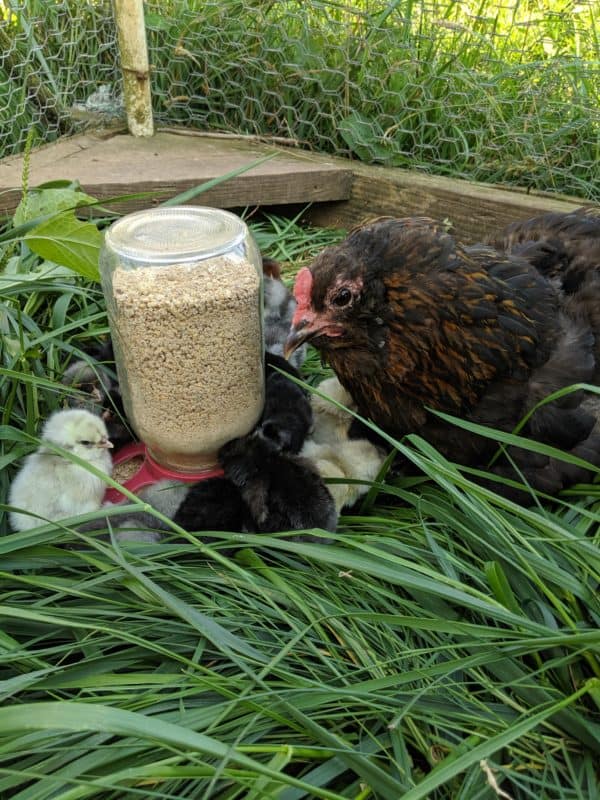
All of the freshly hatched chicks, as well as the mother hen, can eat medicated or unmedicated chick starter for the first weeks of their life. Since the mother hen isn’t laying eggs, chick starter will meet her needs so you don’t have to complicate feeding.
The medicated feed has a coccidiostat that can help prevent coccidiosis in growing birds, so if you’re especially worried about coccidia, this can help set your mind at ease. However, many chicken keepers believe that the medicated feed can hinder the natural development of a growing bird’s immune system.
It may be worth doing some research to decide what works best for you and your flock.
Seeing Your Chicks Grow Up
1. Socializing Chicks
If you like having friendly chickens, you’ll need to do some extra work to raise your chicks as friendly birds. When raised solely by a mother hen, chicks can grow up quite timid of human interaction.
Spending as much time as possible in the vicinity of your mother hen as well as sharing plenty of treats can help your growing birds to warm up to their human parents.
2. Re-integration
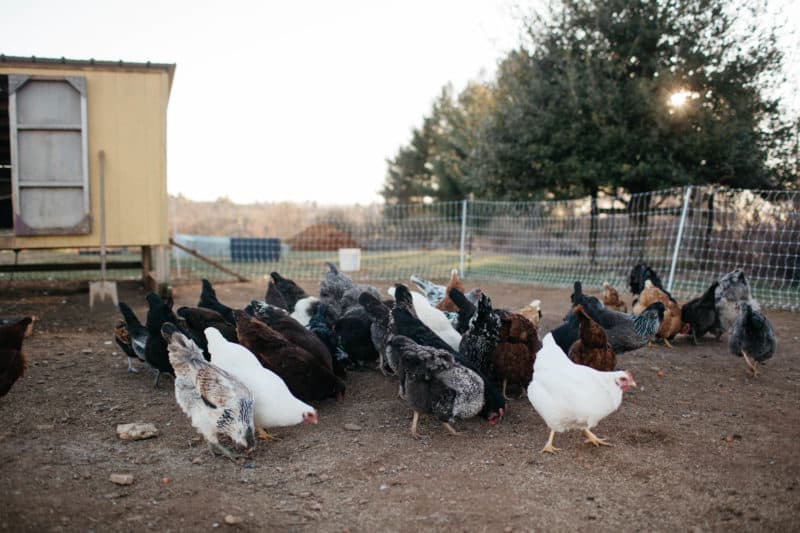
Depending on the size and dynamic of your flock, you can re-integrate the mother and her chicks around four-five weeks of age. However, you have to have a calm and laid back flock to make this work.
Mother hens typically tire of their teenagers around six weeks of age and she may even start laying eggs again. At this time, it’s best to put the hen back with the main flock and finish raising the chicks yourself.
When your chicks are old enough to live with the main flock, integrate them just like you would any new flock member.
The best time to add these new chickens to the flock is at night, just before dark. It helps to reduce aggression, but you’ll still want to keep a close eye on the new chicks over the next few days.
Watching a broody chicken raise her chicks up is one of those timeless things that will always warm your heart. It’s especially nice because your involvement in the process is minimal. Let’s be honest, who couldn’t use a few helpers with the workload on the farm?
How to “Break” Broody Hens
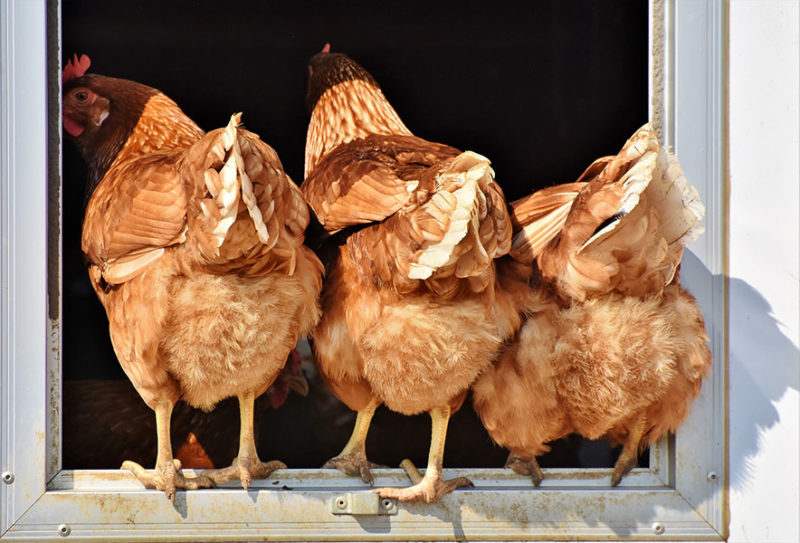
If you only want chickens and eggs for consumption, a broody hen can be a pain in the butt. Breaking a hen of her broodiness helps to make sure she eats when she’s hungry and drinks when thirsty and will eventually get back to laying.
Sometimes, breaking a broody hen is a necessity. If you don’t have a rooster, the eggs are unfertilized, so they’ll never hatch into chicks. Broody hens sit until something hatches, and if that isn’t going to happen, you have to break her of the broodiness.
Broodiness takes a lot out of your hens. A broody hen won’t eat or drink much, leading to infrequently pooping. It’s not healthy for her long term. Extreme cases of broodiness can cause a hen to starve herself to death.
1. Remove the Eggs
The first thing that you want to do is remove the eggs from under the hen regularly. Pick her up and put her away from the nesting area when you collect the eggs. Hens are notorious for being overprotective of their eggs, so expect a big protest.
2. Keeping Moving Her
Several times throughout the day, remove her from the nest and put her at the far end of the run where you put some treats to distract her. Do this as many times as possible.
At night, remove her from the nest when its dark outside and place her on the roosting bar. Most hens will stay there because chickens can’t see well in the dark, so she won’t be able to find her way back to the nest.
3. Get Rid of Her Nesting Area
Blackout your broody hen’s chosen nesting area to dissuade her from going back to it. Another choice is to take all of the nesting material out of the box she picked. Broodies often choose a specific nest, and if you move that nest, she will give up setting on it.
4. Separate Her
You might need to separate your chicken from the rest of the flock. Use a small, portable coop or crate to keep her away from the nesting boxes and eggs to get her out of the broody mindset. If possible, try keeping her in a cage with a wire bottom and plenty of air circulation. A wire cage can help provide a cool feeling on her underside, which can discourage the broodiness.
How long she needs to be in her solitary confinement will depend on how determined she is in her broodiness. Make sure you don’t add any bedding materials. Check on her daily to see what she is doing and put her back into the coop. If she runs back to a nesting box, she must return to solitary confinement.
5. Frozen Water Bottle and Cold Dips in Water
If you have a particularly difficult broody hen, you can put a cold or frozen water bottle under her while she is sitting. The cold helps to trigger a break in the broodiness.
If you don’t have a frozen water bottle, you can dip her bottom into cold water. Remember that she heats her eggs, so a broody hen has quite a warm bottom end. The theory is that the cold can trigger her to abandon her nesting.
When to Embrace the Broodiness
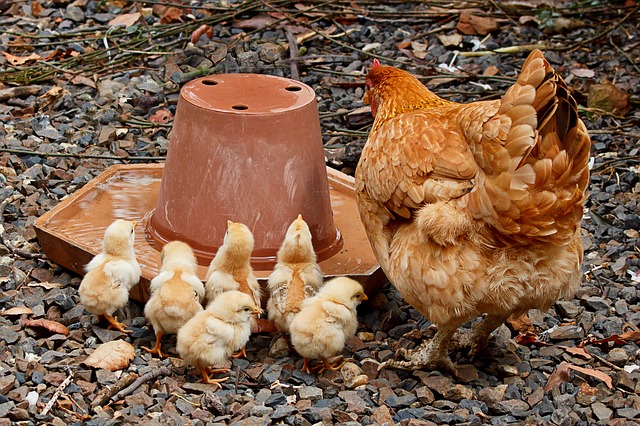
Unless you have a reason why you don’t need or want broody hens, having broodiness is an essential trait for a self-sustaining flock. If you don’t want to rely on the local farm and fleet store to purchase chicks, having a broody hen is an asset that chicken owners should appreciate.
Either way, be sure to watch to ensure your hen is eating and drinking. Broodiness can cause your hen to lose weight, and having a healthy flock should always be your key goal, aside from an abundance of eggs to eat.
